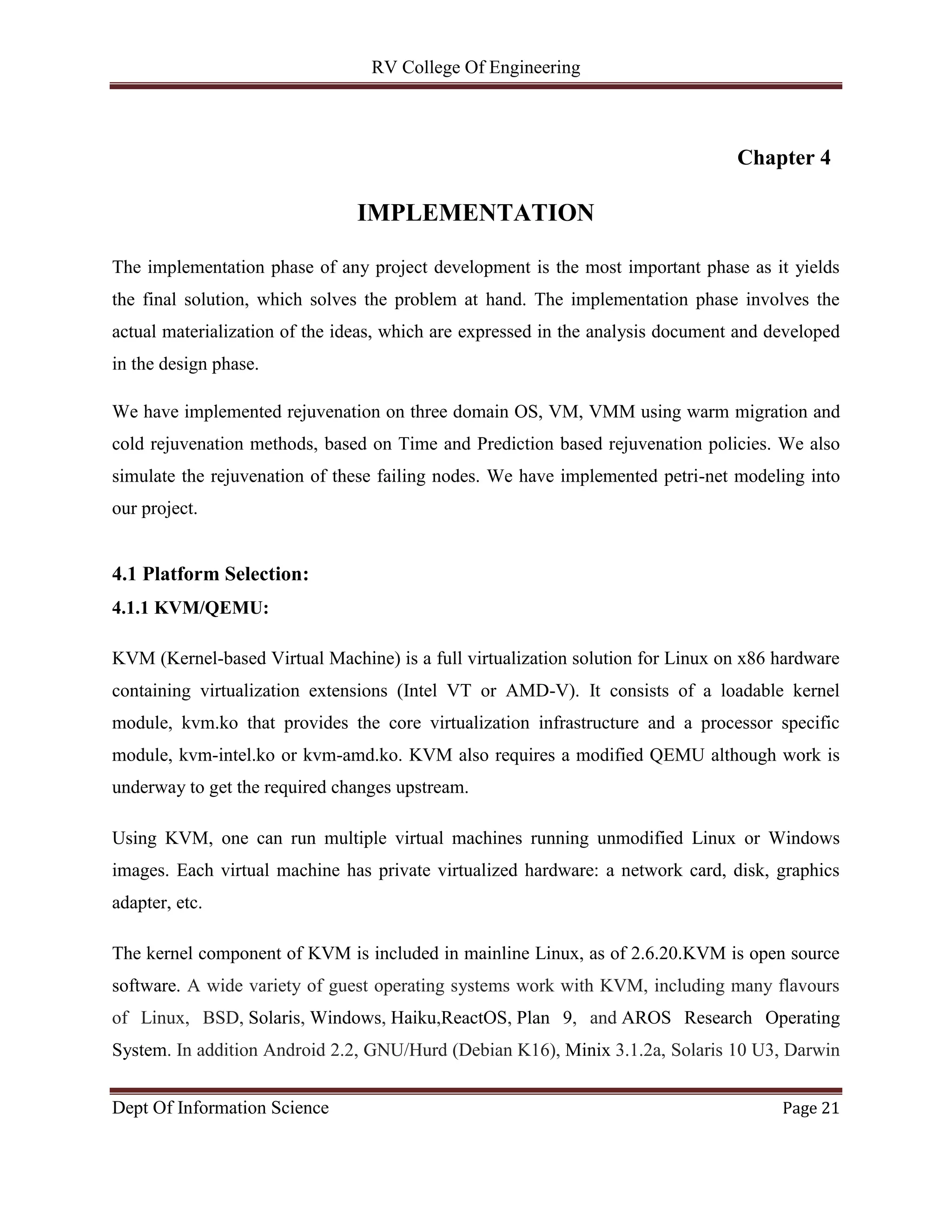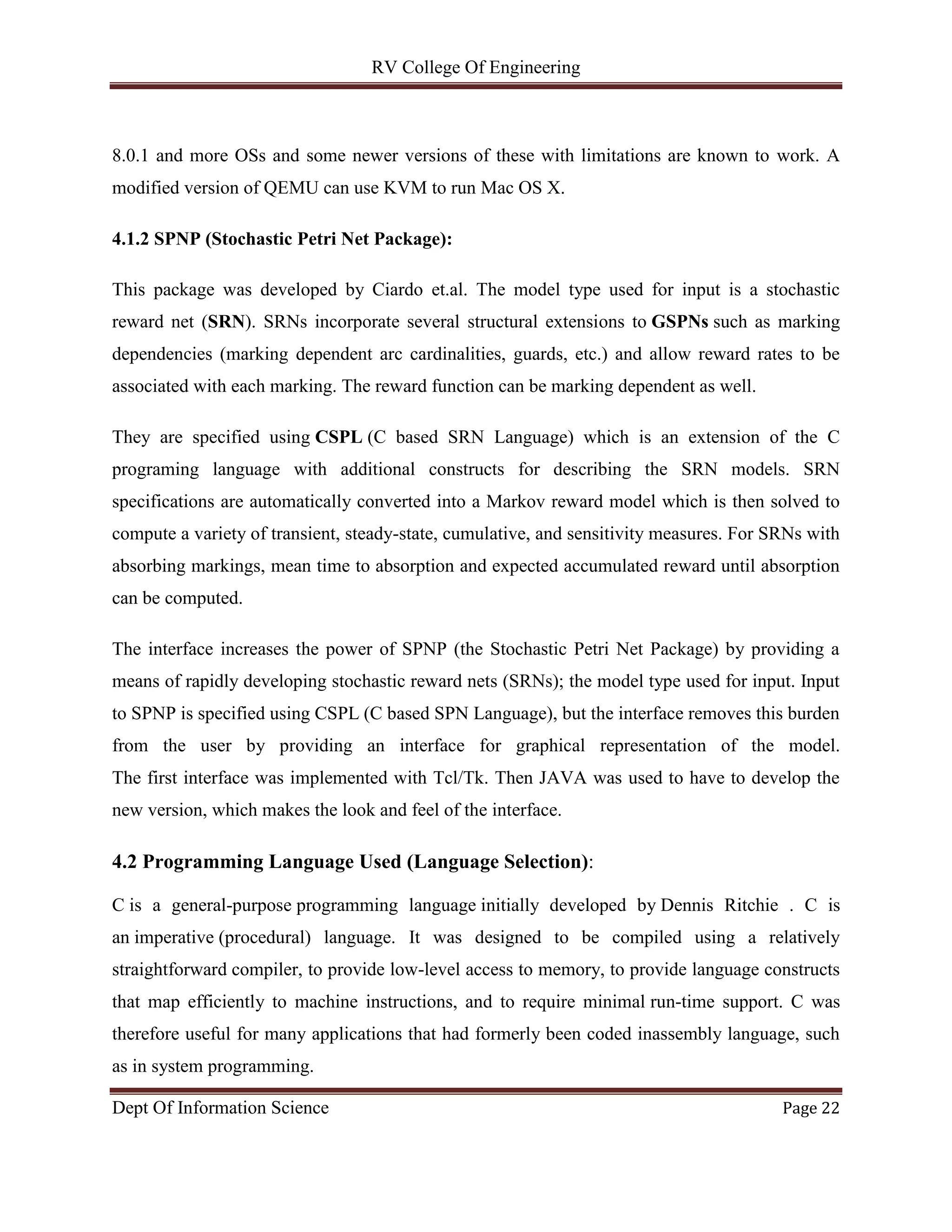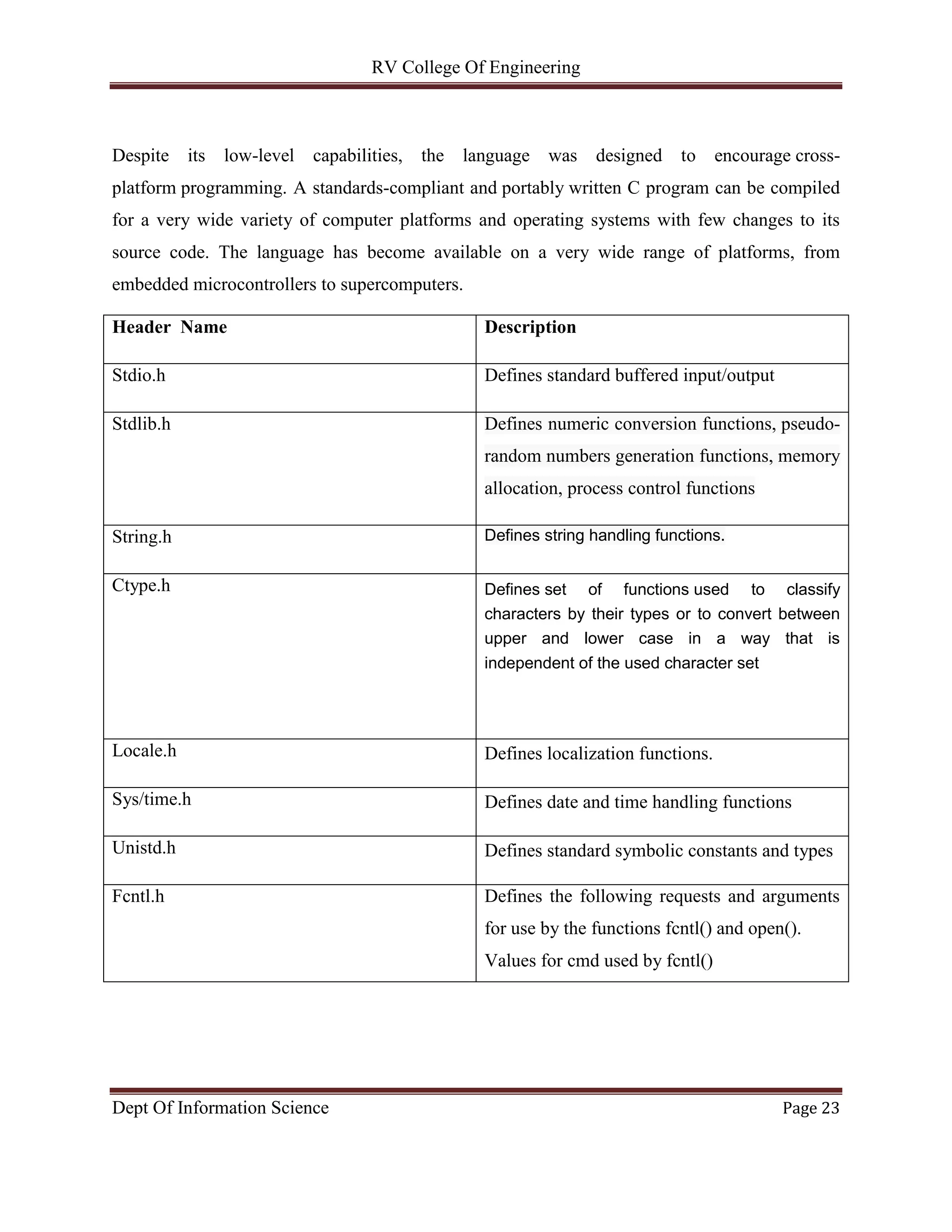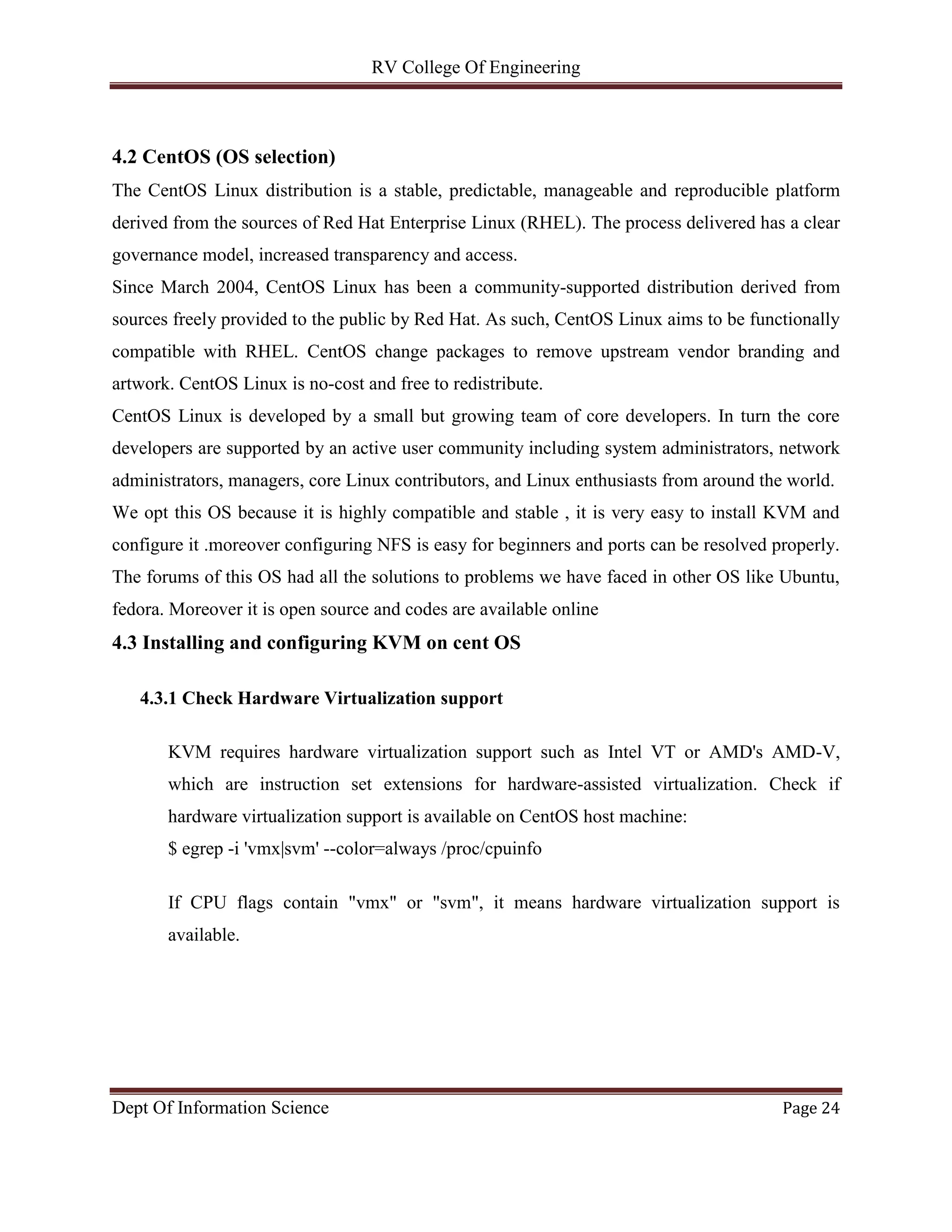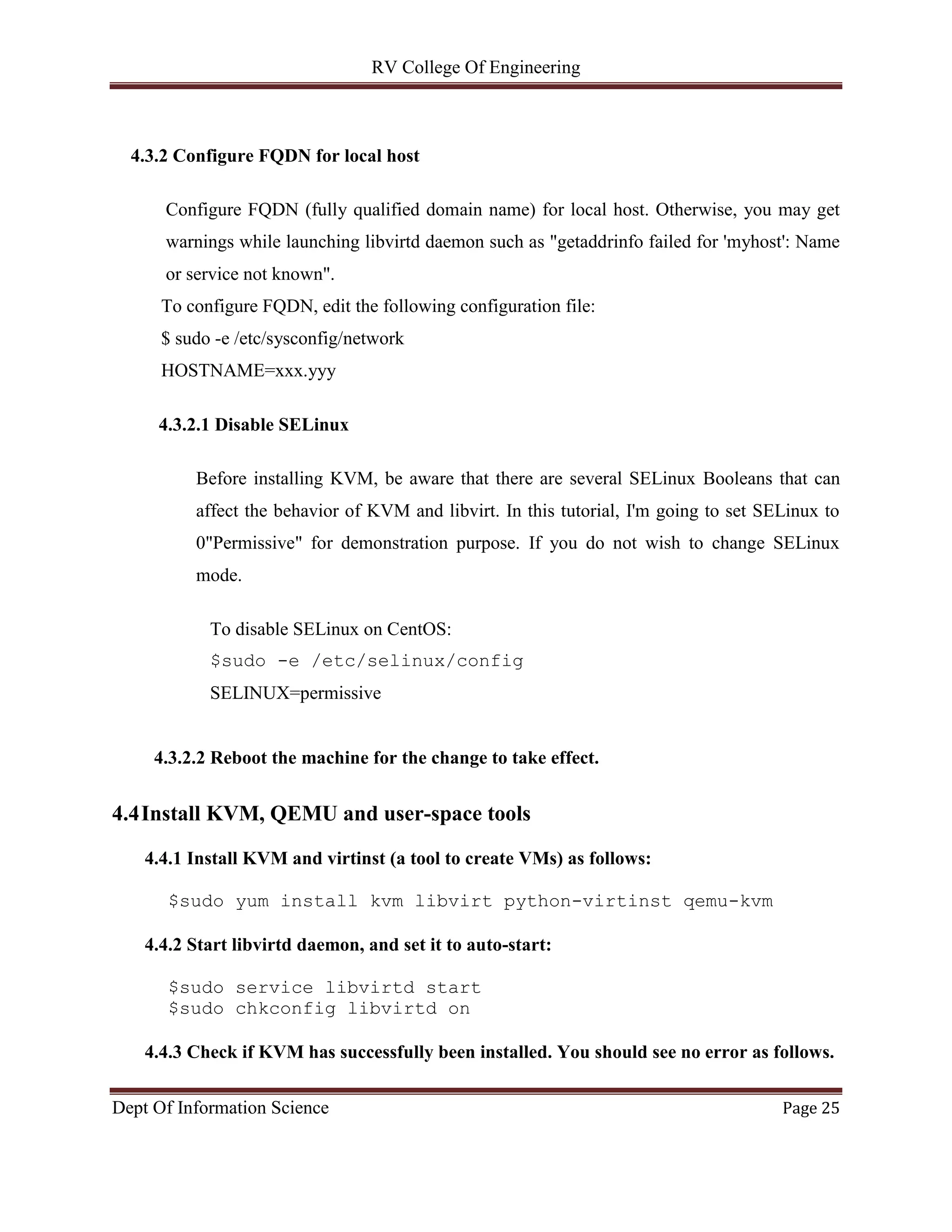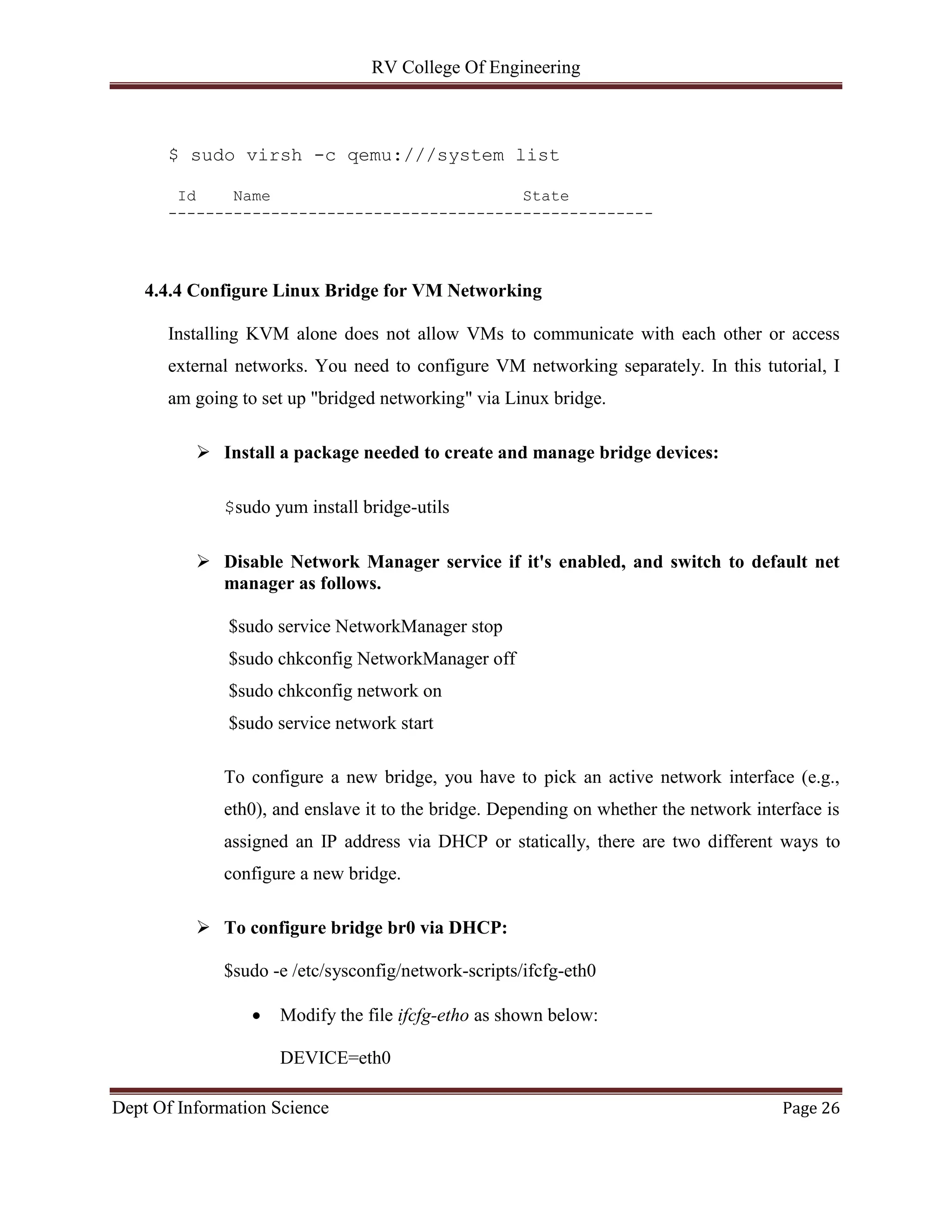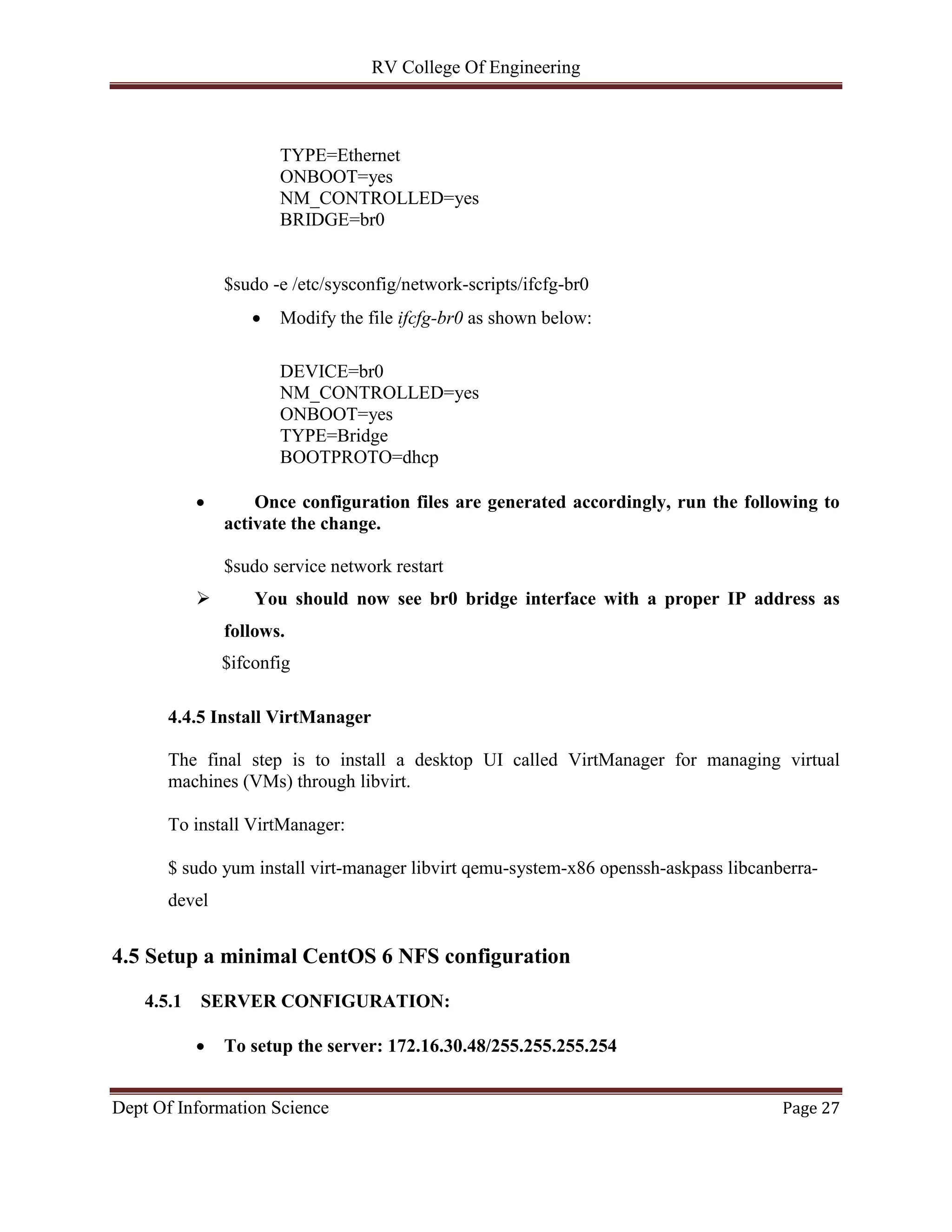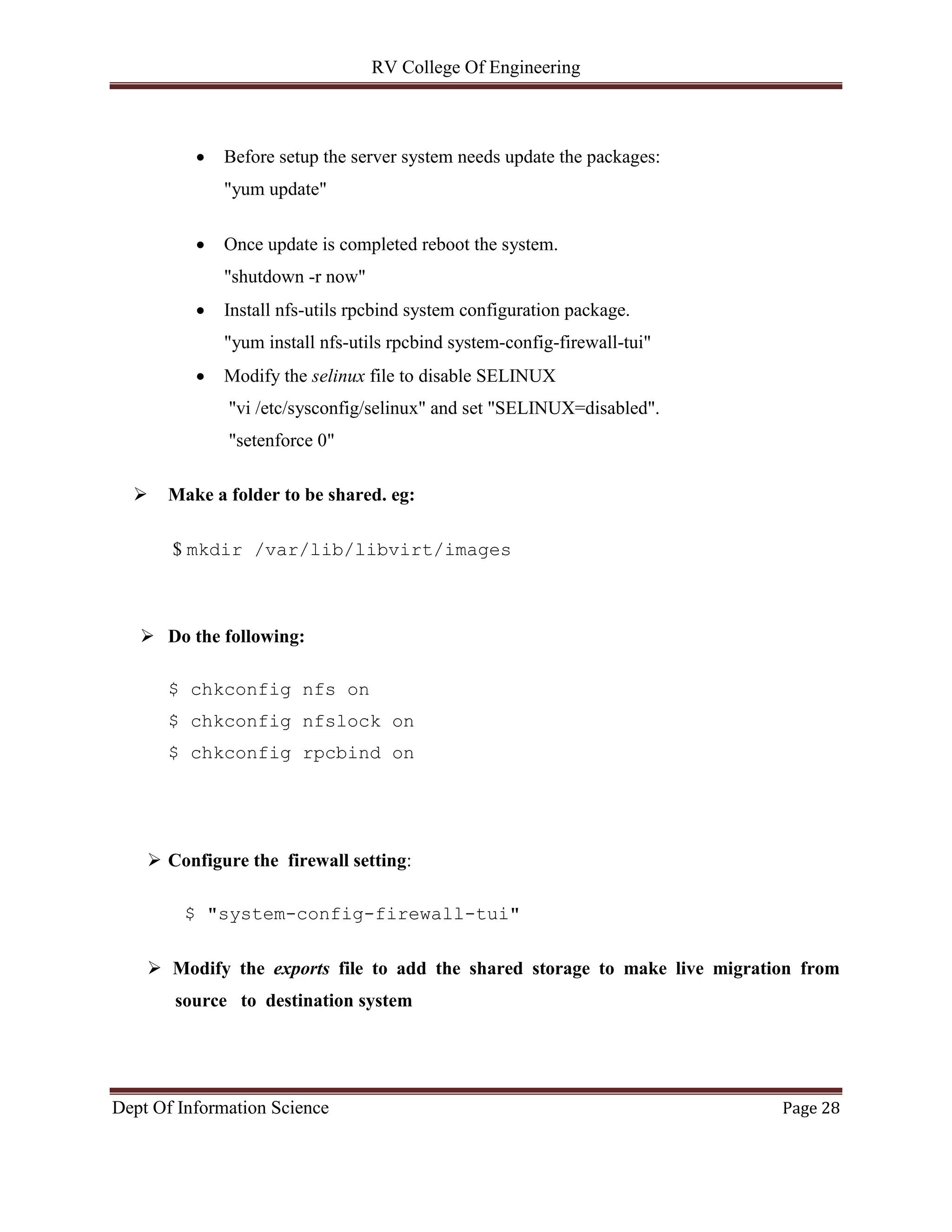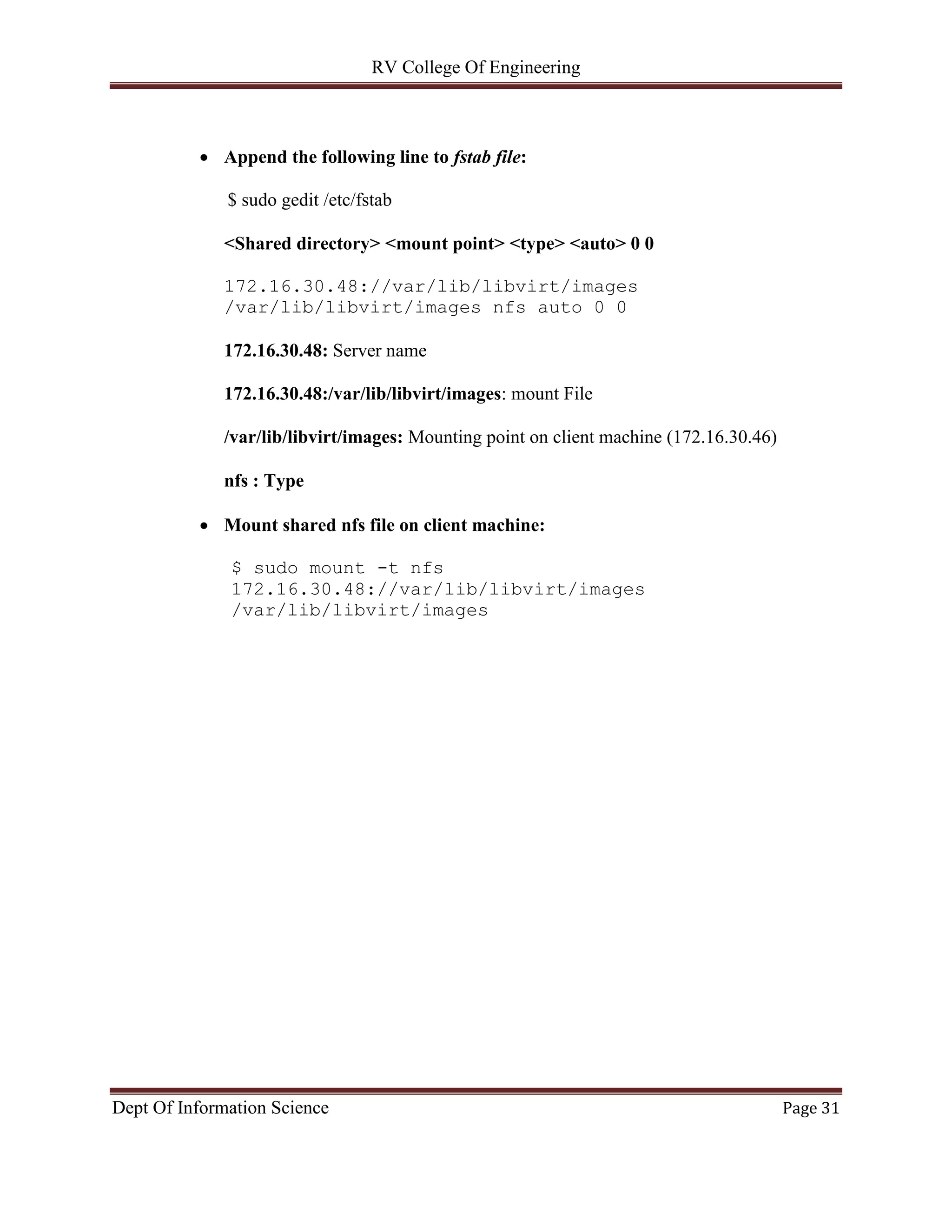The implementation phase involves materializing ideas from analysis and design into the final solution. The authors implemented rejuvenation on three domains using warm and cold methods based on time and prediction policies. They also simulated rejuvenation of failing nodes and implemented Petri net modeling. KVM was selected as the virtualization platform and run on CentOS. C was used as the programming language and key libraries were included. NFS was configured to enable sharing of VM images between servers to allow live migration.
